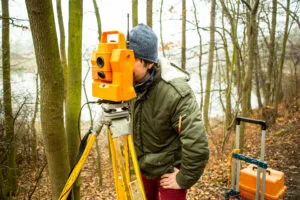
Maps serve as a fundamental tool in understanding the geography of our world, embodying the intersection between art, science, and technology. They not only guide us through unfamiliar terrain but also enrich our comprehension of the earth’s surface, political boundaries, and natural features. Understanding the various types of maps and their unique purposes is essential for anyone relying on them for education, planning, navigation, or geocoding. These navigational aides have evolved significantly over time, shaped by advancements in technology and the growing need for more accurate and informative depictions of the world around us.
This article will explore different types of maps, including political maps, physical maps, topographic maps, weather maps, and geologic maps. Each type serves a unique purpose, from delineating state and national boundaries on a political map to depicting the physical landscape of an area through a physical map. Topographic maps offer detailed representations of the terrain’s elevation, while weather maps provide crucial meteorological data, and geologic maps focus on the earth’s material properties. Additionally, the role of geocoding in enhancing the utility and accuracy of various map types will be highlighted, offering insights into how this technology integrates with traditional and digital mapping techniques to support a wide range of applications.
Political Maps
Definition and Purpose
Political maps are specifically designed to show governmental boundaries of countries, states, and counties, as well as the location of major cities and significant bodies of water. Such maps emphasize political features and are distinguished by their clear depiction of regional boundaries 456. These maps can serve various purposes, from illustrating the distribution of political power, to facilitating a deeper understanding of geopolitical relationships and changes in national borders over time 456.
Examples and Common Uses
- Educational Use: In educational settings, political maps are essential tools for teaching students about the political divisions of the world. They help in understanding how countries are organized and bordered 6.
- Election Analysis: Political maps are invaluable during elections, where they are used to illustrate voting patterns and results. They provide insights into political trends and can influence electoral strategies 6.
- Decision Making: Governments and organizations use political maps for planning and resource allocation. These maps assist in urban planning, development strategies, and in the effective administration of services 6.
- Media Reporting: News outlets frequently use political maps to report on geopolitical events, elections, and other political news to help viewers visualize the information being reported 6.
- Travel Planning: For travelers, political maps are useful for identifying border crossings and understanding the geopolitical landscape of their destinations 6.
Political maps not only depict political boundaries but also include significant geographical identifiers like capital cities and major water bodies. The choice of colors in these maps often varies, with different colors used to represent various political entities like countries or states, enhancing their readability and effectiveness 8.
Physical Maps
Topographic Features
Physical maps are designed to display the natural landscape features of the Earth, highlighting topography through various methods like colors, shaded relief, and contour lines 14. These maps are particularly detailed in showing elevations and terrain structures, using color gradients from green at lower elevations to gray at the highest points, which helps in understanding the geographical layout 14. Features such as rivers and lakes are depicted in shades of blue, enhancing the map’s utility for a range of activities 14. Contour lines, or topographic lines, connect points of equal elevation, providing a clear visual representation of hills, valleys, and other geographical features 15.
Common Applications
Physical maps serve several critical roles across different fields. They are essential tools for environmental scientists who use them to identify areas susceptible to environmental threats like erosion, aiding in the development of conservation strategies 13. Geologists utilize these maps to study the Earth’s crust, helping to pinpoint regions prone to natural disasters such as earthquakes and landslides, which is crucial for disaster planning and mitigation 13. Additionally, these maps are invaluable in outdoor recreation and professional fields like engineering and architecture, providing detailed geographical data that assists in planning and navigation 14. The inclusion of major cities and roads, while not the primary focus, adds to the maps’ versatility, making them useful for general reference 14.
Topographic Maps
Contour Lines and Elevation
Topographic maps are distinguished by their use of contour lines, which are essential for portraying the Earth’s three-dimensional landscape on a two-dimensional medium. These contour lines connect points of equal elevation, making it possible to visualize hills, valleys, and plains. The spacing and shape of these lines provide crucial information about the terrain: closely packed lines indicate steep slopes, while widely spaced lines suggest gentle slopes 161720. Contour intervals, the vertical distance between adjacent lines, are consistent within each map and are key to understanding subtle changes in elevation 20.
Uses in Various Fields
The versatility of topographic maps extends across various professional and recreational fields. Engineers and architects rely on these maps for planning construction projects and landscape design, ensuring that environmental and structural considerations are factored into development plans 19. In environmental conservation, these maps help identify vulnerable land areas, aiding in the formulation of strategies to mitigate erosion and other ecological impacts 19. Additionally, outdoor enthusiasts find topographic maps invaluable for activities such as hiking, camping, and fishing, as they provide detailed information on terrain and elevation, crucial for safe and enjoyable experiences 19.
Weather Maps
Weather maps are pivotal tools in meteorology, providing a snapshot of atmospheric conditions at a specific time and location. These maps are crafted using data from ground stations and satellites, which meteorologists analyze to predict weather patterns 26.
Types of Weather Maps
- Pressure Maps: These maps display atmospheric pressure in millibars, indicating areas of high and low pressure. High pressure often correlates with stable, clear weather, while low pressure can lead to cloud formation and precipitation 22.
- Temperature Maps: Commonly used in media, these maps show current temperatures using color scales or numerical values. They often integrate data on cloud cover and precipitation to provide a general weather overview 22.
- Station-Model Maps: Each station on these maps reports local weather conditions, including temperature, humidity, and wind speed, using meteorological symbols. These local reports are aggregated to represent larger areas 22.
- Aviation Maps: Essential for flight safety, these maps include real-time data on wind, dew point, and potential flight hazards like icing areas and turbulence 22.
- Streamline Maps: These illustrate wind patterns, using data from isobaric pressure readings to depict wind flow rather than just static pressure points 22.
Usage in Daily Life
Weather maps are integral to various daily activities beyond meteorology:
- Agriculture: Farmers rely on these maps to plan irrigation and harvesting by anticipating weather changes 25.
- Event Planning: Organizers use weather maps to schedule events, avoiding potential bad weather to ensure safety and comfort 25.
- Travel: Both pilots and drivers use specific weather maps to navigate safely, avoiding areas with adverse weather conditions 25.
- Public Safety: Emergency services use weather maps to prepare and respond to weather-related emergencies, helping to mitigate risks and inform the public 25.
Each type of weather map serves a unique function, making them indispensable tools in both professional fields and everyday life 26.
Geologic Maps
Rock Types and Geological Features
Geologic maps are pivotal in illustrating the Earth’s geological diversity, portraying rock types and geological periods that shaped a region. Each color on a geologic map typically represents a different rock type, providing insights into geological processes like continental collisions or the effects of Ice Ages 2829. These maps detail the distribution of rock strata, showcasing their relative ages and physical relationships, which are crucial for understanding the area’s geologic history 3132.
Importance in Various Applications
Geologic maps are essential tools across various sectors, significantly impacting economic and societal aspects. They are utilized in land-use planning, assessing geohazards, and developing resources such as water, energy, and minerals 31. These maps also play a critical role in national defense, waste disposal, and informing policy decisions at multiple governmental levels 31. The creation of digital geologic maps enhances their accessibility and utility, providing detailed data crucial for site-specific projects like the siting of new state facilities or resource exploration 31. Additionally, geologic maps serve as a foundation for further geological and environmental research, aiding in the management of natural resources and the assessment of environmental risks 32.
Conclusion
Throughout this exploration of maps, we have journeyed through the diverse utility and purposes of political, physical, topographic, weather, and geologic maps. Each type of map, with its distinct characteristics and applications, enriches our understanding of complex geographical, political, and environmental landscapes. By delineating boundaries, depicting physical terrains, forecasting weather patterns, and revealing the earth’s geologic secrets, maps transcend mere navigation aids to become pivotal in a wide array of strategic planning, education, and decision-making processes.
As we conclude, it’s clear that the advancements in geocoding and digital technology not only enhance the accuracy and utility of maps but also broaden their application across various fields. Whether for educators, planners, scientists, or enthusiasts, the various map types discussed serve as essential tools that guide our interactions with and within the world. The significance of these maps extends beyond their immediate utility, suggesting avenues for further research and action, and highlighting their perpetual impact on society’s developmental and exploratory endeavors.
FAQs
What are examples of specialized maps designed for specific purposes?
Specialized maps, also known as special purpose maps, are designed to focus on particular themes. Examples include precipitation or climate maps, which illustrate rainfall patterns and dry regions; population maps, which highlight densely and sparsely populated areas; and historical maps, which display locations of ancient empires or historical trade routes.
What are the primary functions of maps?
Maps serve multiple functions such as illustrating the sizes and shapes of countries, pinpointing geographical features, and measuring distances between locations. They are also essential for showing the distribution of various elements across the Earth, like settlement patterns, and for detailing the exact locations of structures and streets within a city.
What are special purpose thematic maps?
Special purpose thematic maps are types of maps that focus on specific statistical data and include various forms such as choropleth or shaded maps, dot maps, proportional symbol maps, and isarithmic maps. These maps typically concentrate on a singular theme, like the shifting centers of population in the U.S. from 1790 to 2000.
What is the function of a political map?
A political map is primarily used to display legal or administrative boundaries. These boundaries might be international, such as national borders, or more localized, like counties, states, provinces, cities, or wards. Political maps are commonly utilized for showing Census data and election results.
References
[1] – https://study.com/academy/lesson/types-of-maps-population-topographic-weather-political-world-maps.html
[2] – https://mapgeeks.org/different-types-maps/
[3] – https://www.here.com/learn/blog/the-five-different-types-of-map-and-their-uses
[4] – https://study.com/academy/lesson/what-is-a-political-map.html
[5] – https://www.caliper.com/glossary/what-is-a-political-map.htm
[6] – https://www.maptive.com/what-is-a-political-map/
[7] – https://study.com/academy/lesson/what-is-a-political-map.html
[8] – https://www.worldatlas.com/geography/political-and-physical-maps.html
[10] – https://www.whiteclouds.com/articles/physical-maps/
[11] – https://study.com/learn/lesson/topography-topographic-maps.html
[12] – https://viva.pressbooks.pub/physicalgeologylab/chapter/topographic-features/
[13] – https://www.whiteclouds.com/articles/physical-maps/
[14] – https://geology.com/maps/types-of-maps/
[15] – https://education.nationalgeographic.org/resource/map
[16] – https://www.usgs.gov/faqs/what-a-topographic-map
[17] – https://digitalatlas.cose.isu.edu/geog/basics/topo.htm
[18] – http://www.nwcg.gov/course/ffm/mapping/55-contour-lines-and-intervals
[19] – https://www.usgs.gov/educational-resources/topographic-mapping
[20] – https://www.floridamuseum.ufl.edu/invertpaleo/resources/topographic-maps/
[22] – https://sciencing.com/five-different-types-weather-maps-6325432.html
[23] – https://scijinks.gov/weather-map/
[24] – https://www.noaa.gov/jetstream/wxmaps
[25] – https://en.wikipedia.org/wiki/Weather_map
[26] – https://www.noaa.gov/jetstream/wxmaps-max/learning-lesson-drawing-conclusions
[27] – https://www.turito.com/learn/science/weather-maps
[28] – https://concord.org/blog/mapping-the-distribution-of-rock-types/
[29] – https://geo.libretexts.org/Bookshelves/Geography_(Physical)/The_Environment_of_the_Earth’s_Surface_(Southard)/03%3A_Topography/3.05%3A_Geologic_Maps_and_Cross_Sections
[31] – https://geology.utah.gov/map-pub/survey-notes/practical-uses-geo-maps/
[32] – https://www.usgs.gov/programs/national-cooperative-geologic-mapping-program/introduction-geologic-mapping
[34] – https://www.here.com/learn/blog/the-five-different-types-of-map-and-their-uses
[35] – https://infogram.com/blog/types-of-maps/
[36] – https://study.com/academy/lesson/types-of-maps-population-topographic-weather-political-world-maps.html


